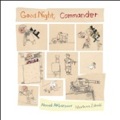
The Commander has lost his mother and one of his legs in the Iran-Iraq war. Now he spends most of his time alone in his room where he recreates the conflict with an imaginary enemy and soldiers, trying to avenge his losses. His father urges him to take off his artificial leg when he is at home, to join his uncles and aunties who have arrived for dinner. But when he does, he finds out that they are all about to go off to meet his “new mother.” Back in his room the imaginary war continues, and he confronts an enemy soldier who is also missing a limb. A battle seems inevitable until The Commander offers the enemy his artificial leg.
See the reviews at WOW Review, Volume 2, Issue 4 & Volume 5, Issue 3.
- ISBN: 9780888999894
- Author: Akbarpour, Ahmad
- Illustrator: Zahedi, Morteza
- Published: 2010
- Themes: Death, Disability, Enemy, Frustration, mothers, War
- Descriptors: Intermediate (ages 9-14), Iran, Iraq, Middle East, Picture Book, Primary (ages 6-9), Realistic Fiction
- No. of pages: 24

The 1980-88 war between Iran and Iraq has left a young boy without a leg and a mother. His father is thinking of remarrying. The child is the innocent victim of these circumstances and struggles to find a way to vent his anger and frustration. The protagonist is still capable of compassion when he meets the imaginary enemy who, surprisingly, is also missing a leg.
This is a very powerful story in which the little boy’s need to seek revenge in make believe play for the murder of his mother sounds emotionally true. The treatment of his disability is unsentimental and straightforward. Make-believe fighting with imaginary soldiers/enemies who are responsible for the way his life has been altered is a thought provoking aspect of this book. Friendship and empathy are represented as a cure for his frustration as during one of the make belief skirmishes he meets another young soldier with the same disability. This meeting develops into an imaginary friendship through which he comes to terms with his own predicament and achieves resolution of his anger. The idea of finding conflict resolution through play is powerful and is articulated well through the insider voices of the author and illustrator. This story can be related to any text to life connection of loss as well as present day global conflicts is well suited for class discussion on the impact of war and the effect it has on children. He takes action within role play and games to manage his situation and succeeds it it.
The child-like illustrations somewhat assuage the anguish of the situation but still clearly convey the strong emotions the little boy feels. The stylistic drawings and use of few colors lend to the solemn atmosphere of the written narrative.